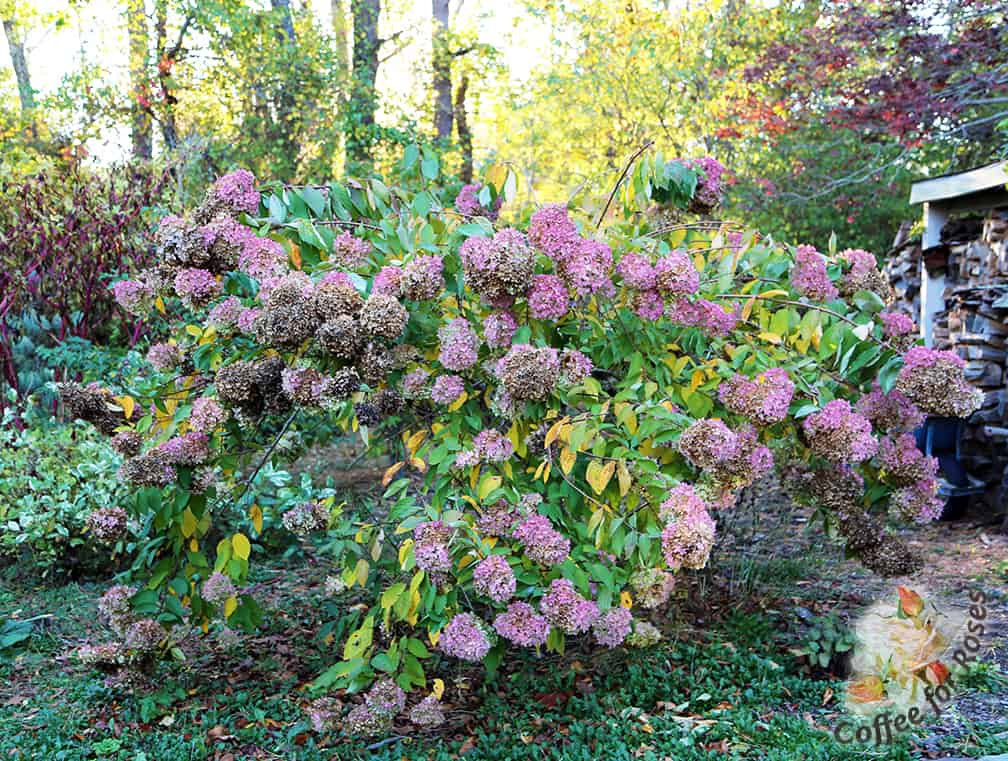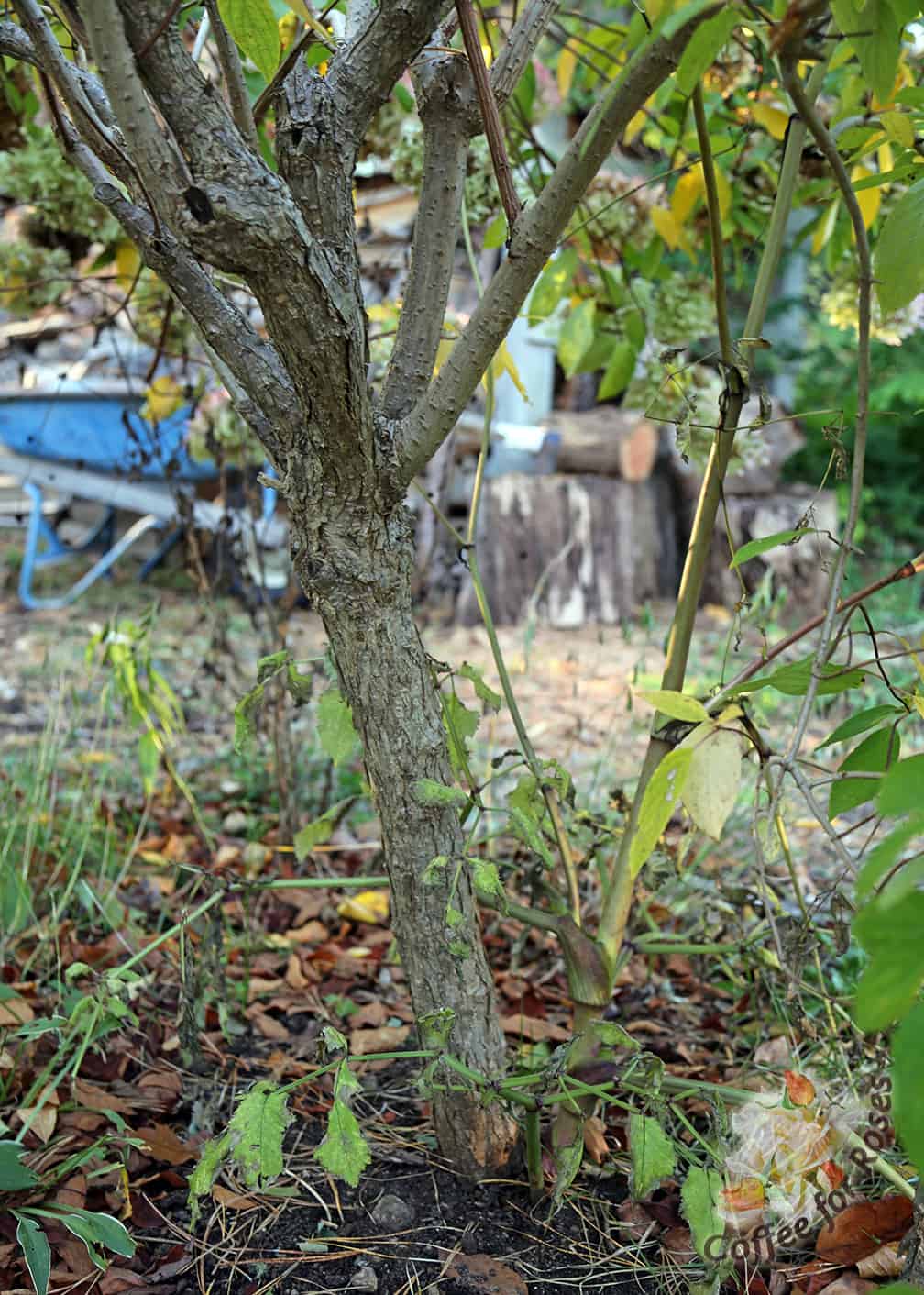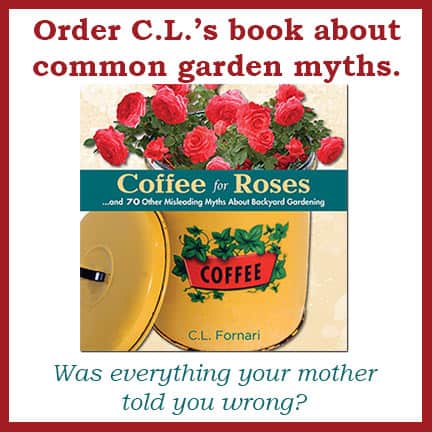I was on a garden consultation recently and we came across a tiny weeping plant that was about a foot and a half tall. It was a mound of curved down stems and leaves, looking more like a small “Cousin It” plant or some sort of sea creature than a shrub or tree. “This was a pussy willow tree that I got in the spring a couple of years ago,” my client said, “but it’s not getting any taller. What can I do?”
The pussy willow pictured below was also such a small “tree.” They are sold in greenhouses and supermarkets in the spring as novelty, lift-our-hearts plants. The weeping part of the pussy willow is grafted on the top of another willow’s stem, and that straight-up trunk will never grow any taller.
This is true not just of tiny pussy willow trees but of all plants that are grafted into a tree form. Pee Gee Hydrangeas are one of the most popular grafted plants. While a regular Hydrangea paniculata shrub will grow large enough (up to 20′ tall) to look like a small tree when pruned into that form, many people don’t want to wait or do the pruning to arborize them. So nurseries carry various cultivars of this hydrangea that are grafted onto a hydrangea trunk that’s about five or six feet tall. The top, shrubby, part of those plants will continue to grow taller but the trunk will always be five or six feet tall.

I was given a gift of a small pussy willow tree about ten years ago. It’s been growing in a pot left outdoors ever since. This plant shows off best when elevated, however, so we have it perched on the rocks near our garden shed.

This is a grafted Hydrangea paniculata grandiflora – the true “P G Hydrangea.” This photo was taken today, Oct 27th, and you see what great old-fashioned, fall beauty this plant gives to the landscape. The cultivar name, “grandiflora” means big flowers, and you can also see from this photo how those large blooms weight the stems down so that the plant almost looks like a weeping variety. P G (aka Pee Gee) Hydrangea shrubs will take on a tree form over time, but they are also sold grafted onto a straight trunk to immediately provide that look. This is a grafted plant – as you can see, however, the growth of the top branches now hide that trunk!

Here is how the trunk of that hydrangea looks today. By the way, I bought this plant in 2008 and it was grafted onto the trunk that was about 4 feet tall once I put it in the ground. This is something to note when you buy a grafted plant – be sure to think of how tall that trunk will be when planted since the pot raises the plant up taller in the nursery. The branches that are above the graft (the straight part of the trunk) are now starting to grow almost trunk-like themselves, and I will be able to selectively prune this plant as it gets older so that it has, from the graft up, multi-stems that become more and more like the trunks of a tree. Not all grafted plants will do this, however. My small pussy willow will always be a tiny tree with long, weeping branches.
Pussy willows and hydrangeas aren’t the only example of grafted tree-form plants. Roses, rose-of-Sharon, dappled willows and many conifers are also sold as “small trees.” They are lovely, and can make nice specimen plants, focal points or container “trees.” Just know that the trunk won’t get taller.



